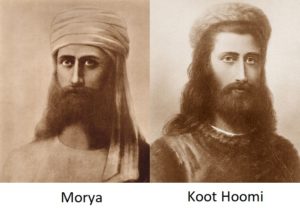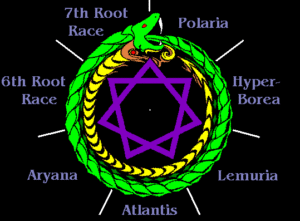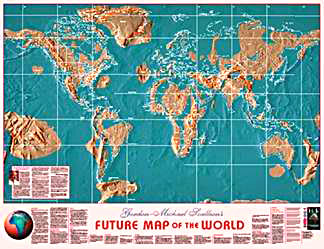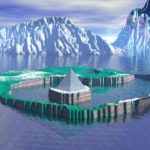 Previously on Sinking Atlantis: The origin of Atlantis, in a couple of Plato’s dialogues. The origin of Mu, in a terrible 19th century mistranslation of a Mayan codex. The origin of Lemuria, in an abandoned 19th century scientific hypothesis.
Previously on Sinking Atlantis: The origin of Atlantis, in a couple of Plato’s dialogues. The origin of Mu, in a terrible 19th century mistranslation of a Mayan codex. The origin of Lemuria, in an abandoned 19th century scientific hypothesis.
Late in the 19th century, in tandem with notables like Ignatius Donnelly and Augustus le Plongeon, a superstar appeared on the Atlantean stage: the founder of Theosophy and all-around colourful character, Madame Helena Blavatsky (1831-1891). I cannot, in one short article, do full justice to the weirdness, brilliance, and badness that was Madame Blavatsky.
She was a Russian adventuress who drifted around Europe for her first forty years 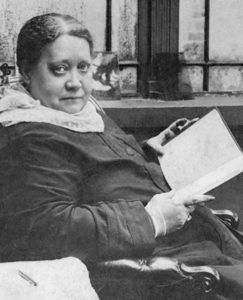 – piano teacher, circus bareback rider, wife to three vanished husbands, spirit medium when the spiritualist movement became fashionable and lucrative, etc. She claimed, however, to have spent much of that time in the mystic places of the east, studying with mysterious occult masters; she also claimed to be a virgin. To cut a very long story short, she invented Theosophy, gathered a cult around her, and became a powerful demigoddess in her own right. In a sense, she also reinvented Atlantis.
– piano teacher, circus bareback rider, wife to three vanished husbands, spirit medium when the spiritualist movement became fashionable and lucrative, etc. She claimed, however, to have spent much of that time in the mystic places of the east, studying with mysterious occult masters; she also claimed to be a virgin. To cut a very long story short, she invented Theosophy, gathered a cult around her, and became a powerful demigoddess in her own right. In a sense, she also reinvented Atlantis.
Up to this point, enthusiasts about Atlantis (and Mu and Lemuria) had treated the issue essentially as an exciting puzzle in history or archaeology. The general vision of these lost continents could be called down to earth. They were seen as ancient civilizations, powerful, populous, and 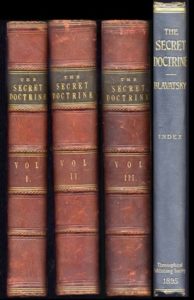 glittering, but essentially idealized versions of ancient Egypt, Greece, Mesopotamia, or latterly the Maya. A few isolated predecessors had written mystically of Atlantis, but it was Madame Blavatsky, popularizer and plagiarist, who was chiefly responsible for relocating the lost continent in the realms of the occult.
glittering, but essentially idealized versions of ancient Egypt, Greece, Mesopotamia, or latterly the Maya. A few isolated predecessors had written mystically of Atlantis, but it was Madame Blavatsky, popularizer and plagiarist, who was chiefly responsible for relocating the lost continent in the realms of the occult.
Like many founders of New Religious Movements, Blavatsky wrote her own scriptures—though she claimed to be transcribing and translating, rather than composing. Her masterwork The Secret Doctrine (1888) was, she said, the distillation of the immemorial Stanzas of Dzyan, which had been written down by Atlantean mages in the ancient sacerdotal language Senzar, and reverently preserved in secret “rock libraries” in Tibet.
The knowledge was communicated to her in dreams by her mysterious Masters of the Ancient Wisdom, pseudonymed Morya and Koot Hoomi—gurus who were esoterically adept enough to transcend their physical bodies, but physical enough to write letters to Madame’s followers. Somehow, nobody ever met them in the body except perhaps Madame (though Morya once appeared to Madame’s sidekick, Colonel Olcott, as an astral projection), and their letters were in Madame’s handwriting. Nobody had ever heard of Senzar, either, and spoilsports over the years recognized Madame’s sources in translations of Buddhist and Hindu texts, plus a large dollop of Ignatius Donnelly. This did not stop Theosophy from spawning a vast occult subculture with many, many branches.
The wisdom vouchsafed to Madame was no less than the entire history of the cosmos, including the esoteric evolution of humankind on Earth. This involved a sequence of six “Root Races,” starting on an Earth that was mostly water, with one small continent at the north pole. Through the aeons, each root race occupied whatever continent was currently above water until some variety of geological cataclysm destroyed it and brought a new and usually larger one to the surface. Here is the tl-dr version of Mankind’s theosophical ancestry:
- The Polareans (aka Etherics or Astrals) were a bodiless race living 250-500 million years ago on the only available dry land on the planet, at the North Pole. They were not very bright, and reproduced by splitting like amoebae. Their continent, the “Imperishable Sacred Land,” had the distinction of surviving the rise of the next continent and the absorption of its inhabitants into the Second Root Race, the…
- …Hyperboreans, who were also ethereal in nature, and reproduced by budding. Their continent sank. They were followed by the…
- …Lemurians, twelve-foot giants with a third eye on the back of the head, who had physical bodies and finally invented sex. Their continent, Lemuria, filled much of the Pacific—until it sank. They were followed by the…
- …Atlanteans, who were anatomically human and had psychic powers and mystical energy sources and high technology and everything, courtesy of some obliging extraterrestrials, but whose continent sank. Obviously. But the sinking took some considerable time, beginning at least 35 million years ago. The last bit to go, about 10,000 years ago, was the bit Plato wrote about. The Atlanteans were followed by the…
- …Aryans. the Race of Hope – which is us. Or some of us. There was a racist element here, and it should be noted that Nazi theorists were very keen on Blavatsky’s Aryan theories. At some point in the 28th century, however, our continents will be swept away and the Sixth Race will rise.
Since Blavatsky’s time, the Theosophical movement she built on this frankly hilarious foundation has become a wellspring of New Age and New Religious Movements, cross-fertilized with Gnosticism, Christianity, Buddhism, and Eastern mysticism. Included in the mix are the attribution of marvels of lost technology to the doomed Atlanteans—aircraft, advanced power sources, genetic engineering, and control over the mystical potential of crystals, quantum states, other dimensions, the life force, and psychic powers. Aliens, too, of course. In this 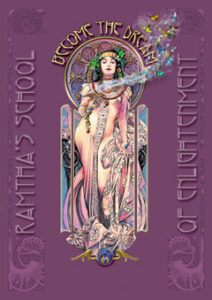 branch of Atlantology, the ancient lost continents have morphed into the kind of vision more usually found in a science-fictional future.
branch of Atlantology, the ancient lost continents have morphed into the kind of vision more usually found in a science-fictional future.
In fact, this occult subcurrent is now so strong that it is a little surprising to realize its origin was so relatively recent. Think of Shirley MacLaine, who witnessed the sinking of Atlantis in one of her many past lives; or J.Z.Knight, channelling her Lemurian warrior Ramtha, who battled the Atlanteans 35,000 years ago; or of Mark and Elizabeth Clare Prophet, who were priest and priestess in Atlantis long before they lived as everyone from Akhenaten and Nefertiti to Hiawatha and Longfellow. And so on. Note how far away from Plato’s original narrative this branch of Atlantology has strayed.
Thank a lot, Madame Blavatsky.
While Theosophy was going fractal in the early 20th century, another major figure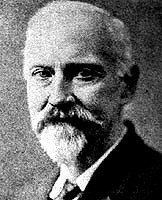 emerged outside its bounds: Colonel James Churchward (1851-1936), the prophet of Mu. (“Colonel” was an honorific title bestowed by himself). Born in England in 1851, he went to Sri Lanka in 1872 to administer the tea plantations inherited by his wife, returned to England with wife and child by 1881, and then moved to New York. For the next thirty-odd years, he had some success as an engineer and inventor, made a fortune, and wrote a book on fishing in Maine. But it was in the 1920s, in his seventies, that he caused a sensation with The Lost Continent of Mu, the first of a still-popular series of books.
emerged outside its bounds: Colonel James Churchward (1851-1936), the prophet of Mu. (“Colonel” was an honorific title bestowed by himself). Born in England in 1851, he went to Sri Lanka in 1872 to administer the tea plantations inherited by his wife, returned to England with wife and child by 1881, and then moved to New York. For the next thirty-odd years, he had some success as an engineer and inventor, made a fortune, and wrote a book on fishing in Maine. But it was in the 1920s, in his seventies, that he caused a sensation with The Lost Continent of Mu, the first of a still-popular series of books.
Churchward’s theories were in the same genre as Blavatsky’s, but he was a competitor rather than a disciple. Like her, he claimed to have travelled the mystic east and learned from occult masters in India and Tibet. Blavatsky had her esoteric Senzar language; Churchward had his esoteric Naga-Maya. Blavatsky had her Stanzas of Dzyan in the keeping of Tibetan monks; Churchward had his Naacal Tablets in the keeping of Tibetan (or Indian) monks. Blavatsky was taught by her Masters of Ancient Wisdom, Churchward was taught by his Indian Rishi, one of only three who could understand Naga-Maya. Under the circumstances, it seems rather unsporting that Churchward decried the Stanzas of Dzyan as the product of a disordered mind.
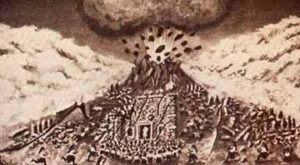 Churchward’s translation of the Naacal Tablets (note: nobody else ever saw them) and the controversial Nivens Tablets from Mexico revealed that Mu was the fountainhead of all civilization, though Atlantis and Lemuria came into the equation as well. The Muvians were wise and good and beautiful – but alas, the huge gas-filled caverns underlying Mu exploded and sank the continent and killed everybody except the few survivors who expeditiously carved the Naacal tablets. Mountains, incidentally, were a by-product of the explosion. Earth’s topography had previously been pretty flat.
Churchward’s translation of the Naacal Tablets (note: nobody else ever saw them) and the controversial Nivens Tablets from Mexico revealed that Mu was the fountainhead of all civilization, though Atlantis and Lemuria came into the equation as well. The Muvians were wise and good and beautiful – but alas, the huge gas-filled caverns underlying Mu exploded and sank the continent and killed everybody except the few survivors who expeditiously carved the Naacal tablets. Mountains, incidentally, were a by-product of the explosion. Earth’s topography had previously been pretty flat.
What is very clear is the debt Churchward owed to Augustus Le Plongeon, and this should be no surprise. They were friends. They met in New York in the 1880s, and Churchward was fascinated by Le Plongeon’s theories. The further development of these theories in the 1920s, however, is pure Churchward. In understanding this, we have the unusual benefit of the work done by Churchward’s great-grandson, who is currently engaged in seeking the uncompromising truth about his great-grandfather’s claims. His research has shown that, for example, Churchward never served in the British army, never studied under an Indian rishi, and essentially made the whole thing up. But Churchward’s books are still circulated, and his name is a byword in Atlantean studies.
Also in the 1920s, another Star of Atlantis was rising: Edgar Cayce (1877-1945), 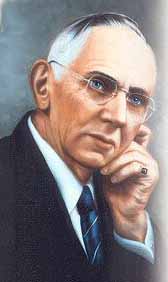 psychic, prophet, and founder of a quasi-religious organization called the Association for Research and Enlightenment (A.R.E.), which still prospers exceedingly. Cayce was apparently a modest and devout man who believed his psychic, healing, and prophetic powers were gifts from God, and he was using them in God’s service. Those powers manifested only when he was asleep—hence his moniker, the “Sleeping Prophet.”
psychic, prophet, and founder of a quasi-religious organization called the Association for Research and Enlightenment (A.R.E.), which still prospers exceedingly. Cayce was apparently a modest and devout man who believed his psychic, healing, and prophetic powers were gifts from God, and he was using them in God’s service. Those powers manifested only when he was asleep—hence his moniker, the “Sleeping Prophet.”
Early in Cayce’s career, he concentrated on healing, which is quite a story in itself but beyond the scope of this post. But in the early 1920s, a close friend and devout Theosophist, Arthur Lammer, persuaded him to branch out into theosophy-style esoterica. Many of Cayce’s naps subsequently were given over to Atlantis, the wise and technologically superior supercivilization whose wisdom was all but lost in a terrible catastrophe about 10,500 years ago. This ancient wisdom would at last come to light, however, when an Ancient Hall of Records would be discovered between the Sphinx’s paws in Giza, sometime in the late 1990s. Indeed, Atlantis itself would rise again out of the waves east of America, circa 1968.
Further prophecies involved dramatic “earth changes” that would take place between 1958 and 1998. The western portion of North America would break up. The greater portion of Japan would sink. The northern portion of Europe would be changed in the twinkling of an eye. New York would largely vanish. The poles would shift, so that tropical regions would become frigid, and cold regions would grow moss and ferns. Somehow, Cayce’s followers can keep a straight face while describing him as the most accurate psychic prophet ever.
In the world of pseudoarchaeology, Cayce lives on as a kind of patron saint of the “Lost Supercivilization” school of thought. His “Hall of Records” is the Holy Grail—not just the one said to be guarded by the Sphinx, but backup copies in Bimini and the Yucatan, and maybe elsewhere. His mystical pronouncements on Atlantis are a plank in the platform of the New Atlantis bunch, including Graham Hancock and Robert Bauval. Thanks, Edgar.
Roundup
So far, we have looked at the bare-bones history of the Atlantis narrative, where it started and how it grew, including how it sprouted two more lost continents. In the next instalment, we will look at the hunt for its “true” location—and the astounding number of seekers who claim to have found it.

